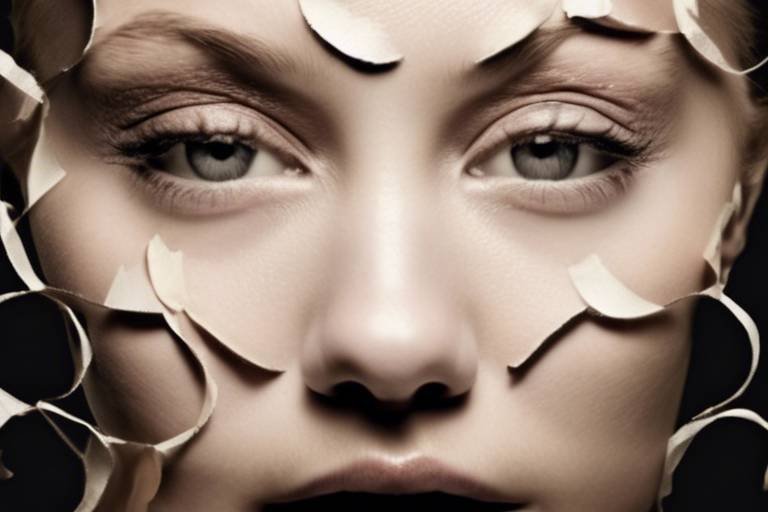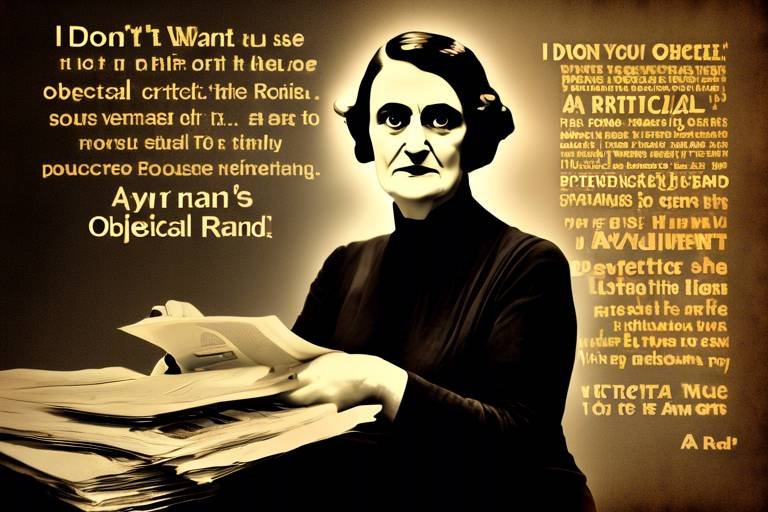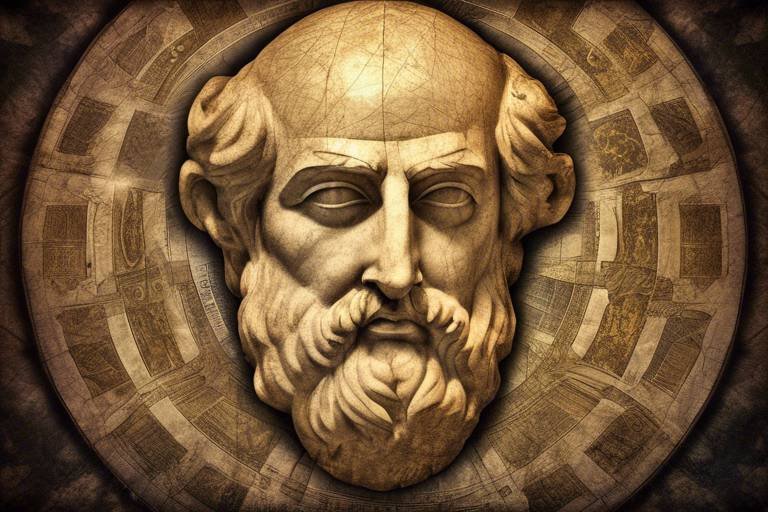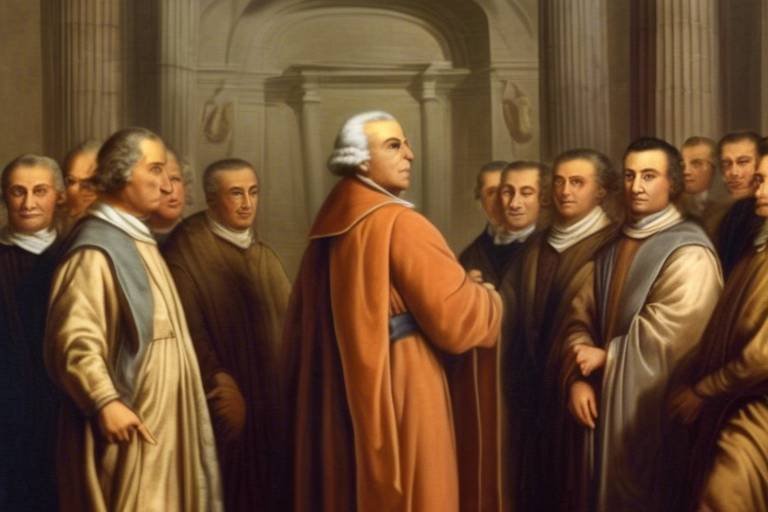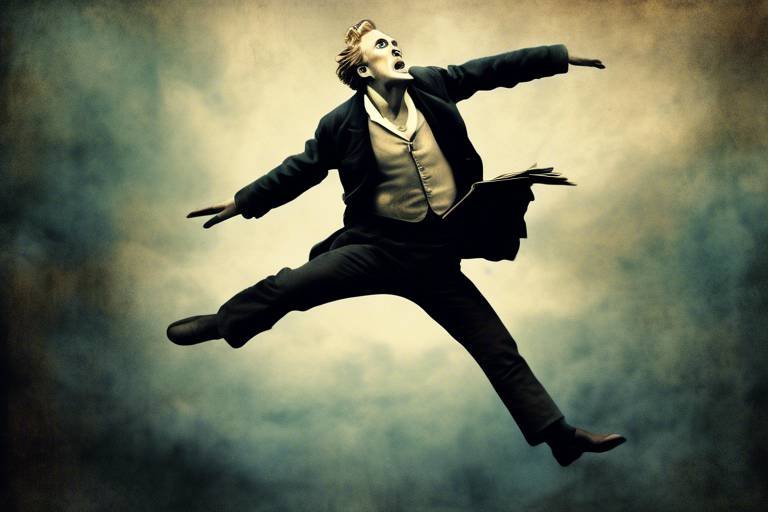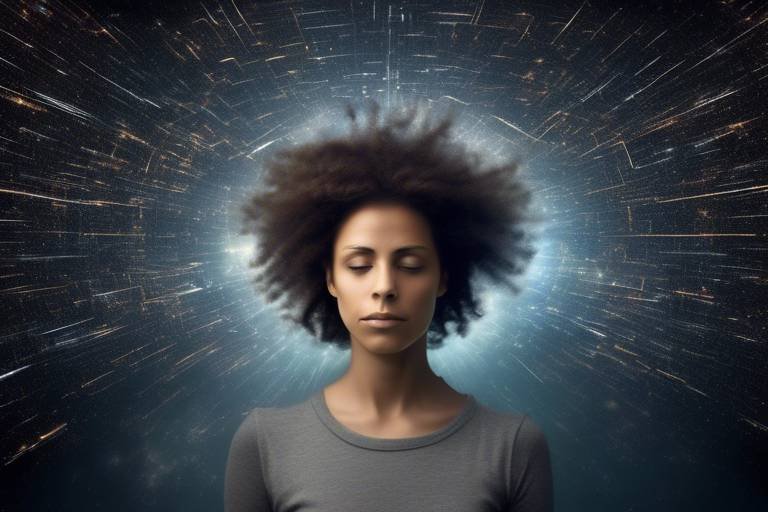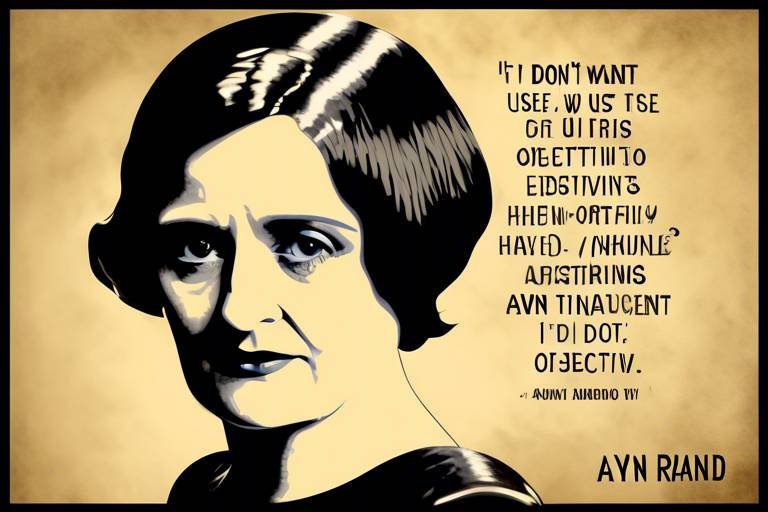The Concept of Beauty - A Philosophical Disquisition
Beauty is a concept that has fascinated humanity for centuries, weaving its way through the fabric of our lives, cultures, and philosophies. But what exactly is beauty? Is it merely a visual delight, or does it encompass deeper meanings and emotions? This article explores the multifaceted nature of beauty, examining its philosophical implications, cultural interpretations, and psychological effects, ultimately seeking to understand what constitutes beauty in various contexts.
Delving into ancient philosophies, we explore how thinkers like Plato and Aristotle defined beauty, shaping our understanding and appreciation of aesthetics through the ages. Plato viewed beauty as an ideal form, a reflection of truth that transcends the physical world. In contrast, Aristotle grounded beauty in the observable world, emphasizing proportion and harmony. These early philosophical insights laid the groundwork for centuries of debate and exploration into the essence of beauty, influencing countless artists, writers, and thinkers.
Art and literature serve as profound mediums through which beauty is portrayed and interpreted. From the brushstrokes of a painting to the verses of a poem, beauty manifests in various forms, often challenging our perceptions and evoking deep emotional responses. The role of aesthetics is crucial in determining beauty standards, influencing both artists and audiences in their perceptions and emotional responses to art. For instance, the Renaissance period celebrated the beauty of the human form, while the Romantic era found beauty in nature and the sublime.
Aesthetics plays a crucial role in determining beauty standards, influencing both artists and audiences in their perceptions and emotional responses to art. The principles of balance, contrast, and unity often dictate how we interpret and appreciate artistic works. However, these principles can vary across cultures and time periods, making the study of aesthetics a dynamic and ever-evolving field.
Artistic beauty is often subjective, varying greatly among individuals and cultures, reflecting personal experiences and societal norms that shape our understanding of what is beautiful. For example, while one person may find beauty in a chaotic abstract painting, another might see it as disordered and unappealing. This subjectivity highlights the complexity of beauty and suggests that it is not a universal standard but rather a personal and cultural interpretation.
Literature often captures beauty in its many forms, exploring themes of love, nature, and the human experience, thereby enriching our emotional and intellectual engagement with texts. Authors use descriptive language and vivid imagery to evoke beauty, allowing readers to experience the world through different lenses. This exploration of beauty in literature invites readers to reflect on their own perceptions and experiences, creating a dialogue between the text and the individual.
Philosophical theories, such as Kant’s and Hegel’s, provide frameworks for understanding beauty, emphasizing the interplay between perception, emotion, and the essence of beauty itself. Kant argued that beauty is a subjective experience that arises from the harmonious interaction between our senses and our intellect. Hegel, on the other hand, saw beauty as a manifestation of the spiritual and the ideal, suggesting that true beauty transcends mere appearances and connects us to deeper truths about existence.
Exploring how different cultures define and celebrate beauty, this section highlights the diversity of aesthetic values and the impact of cultural heritage on beauty standards. In some cultures, beauty may be associated with specific physical traits, while in others, it may be linked to moral virtues or social status. This diversity underscores the notion that beauty is not a monolithic concept but rather a reflection of the values and beliefs of a society.
Beauty standards differ significantly across cultures, influenced by historical, social, and economic factors, revealing the complexity and relativity of beauty. For instance, in Western cultures, there has been a historical preference for slender body types, while other cultures may celebrate fuller figures as symbols of health and prosperity. This variation challenges the notion of a singular standard of beauty and invites us to appreciate the richness of human diversity.
Globalization has led to the exchange and sometimes homogenization of beauty standards, raising questions about cultural identity and authenticity in the pursuit of beauty. As Western beauty ideals permeate other cultures through media and advertising, traditional notions of beauty may be overshadowed, leading to a potential loss of cultural uniqueness. This phenomenon encourages us to reflect on the implications of globalization and the importance of preserving diverse beauty standards.
Investigating the psychological effects of beauty, this section discusses how perceptions of beauty influence self-esteem, mental health, and interpersonal relationships. The way individuals perceive beauty can significantly affect their self-esteem and body image, shaping their interactions and overall mental well-being. For many, societal beauty standards can create unrealistic expectations, leading to feelings of inadequacy and anxiety.
Beauty often plays a pivotal role in social dynamics, influencing attraction, social status, and the formation of relationships in various contexts. Individuals who perceive themselves as beautiful may experience enhanced social opportunities, while those who do not may face challenges in their personal and professional lives. This disparity highlights the profound impact of beauty on our self-perception and interactions with others.
In social relationships, beauty can be both a blessing and a curse. While physical attractiveness may facilitate initial connections, deeper relationships often hinge on shared values, interests, and emotional compatibility. Thus, understanding beauty's role in social dynamics requires a nuanced perspective that considers both surface-level attributes and deeper emotional connections.
- What is the definition of beauty? Beauty is a complex concept that encompasses aesthetic pleasure, emotional resonance, and cultural significance.
- How do cultural differences affect perceptions of beauty? Different cultures have unique beauty standards influenced by historical, social, and economic factors, leading to diverse interpretations of beauty.
- Can beauty standards change over time? Yes, beauty standards are not static; they evolve with cultural shifts, technological advancements, and globalization.
- What role does beauty play in mental health? Perceptions of beauty can significantly impact self-esteem and body image, influencing mental health and interpersonal relationships.

Historical Perspectives on Beauty
Throughout history, the concept of beauty has been a subject of profound contemplation and debate among philosophers, artists, and thinkers. From the ancient Greeks to the modern era, the definition of beauty has evolved, shaped by cultural, social, and individual influences. **Plato**, for instance, viewed beauty as an ideal form, something that transcended the physical world and connected to a higher reality. He believed that beauty was a reflection of truth and goodness, suggesting that the appreciation of beauty could lead one closer to understanding the divine.
In contrast, **Aristotle** offered a more pragmatic approach, suggesting that beauty was rooted in the properties of objects themselves. He posited that beauty could be found in symmetry, proportion, and harmony, which are qualities that can be observed in nature and art. This philosophical divergence set the stage for centuries of discourse on the nature of beauty, influencing not only aesthetic theory but also the way societies perceive and value beauty.
As we move through history, we see how beauty standards have been influenced by various cultural movements. The **Renaissance**, for example, celebrated humanism and the beauty of the human form, leading to masterpieces that emphasized anatomical precision and emotional expression. Artists like **Leonardo da Vinci** and **Michelangelo** captured the essence of beauty in their works, intertwining it with themes of spirituality and human experience.
Furthermore, the **Baroque** period introduced a dramatic flair to beauty, characterized by grandeur and extravagance. Artists and architects sought to evoke emotional responses through their work, pushing the boundaries of what was considered beautiful. This period marked a shift from the serene beauty of the Renaissance to a more dynamic and expressive interpretation.
In the 18th century, **Immanuel Kant** introduced a new philosophical framework, emphasizing the subjective nature of beauty. He argued that beauty is not an inherent quality of objects but rather a product of human perception and experience. This idea of **subjectivity** paved the way for modern interpretations of beauty, where individual taste and cultural context play significant roles in defining what is beautiful.
To further illustrate these historical perspectives, the following table summarizes key philosophers and their views on beauty:
| Philosopher | View on Beauty |
|---|---|
| Plato | Beauty as an ideal form, reflecting truth and goodness. |
| Aristotle | Beauty rooted in symmetry, proportion, and harmony. |
| Kant | Beauty as subjective, based on individual perception. |
| Hegel | Beauty as a manifestation of the spirit in art. |
As we continue to explore the historical perspectives on beauty, it becomes evident that our understanding of beauty is not static; it is a living, breathing concept that adapts and changes with the times. Each philosophical contribution adds a layer of complexity, encouraging us to question and redefine our own perceptions of beauty. In today’s world, where cultural exchange is more prevalent than ever, these historical insights allow us to appreciate the rich tapestry of beauty across different eras and societies.
- What is the philosophical definition of beauty? Philosophically, beauty is often defined as a quality that provides pleasure or satisfaction to the senses or mind, with various thinkers offering differing interpretations.
- How have beauty standards changed over time? Beauty standards have evolved significantly, influenced by cultural movements, societal changes, and individual perceptions throughout history.
- Who were the key philosophers that influenced beauty? Notable philosophers include Plato, Aristotle, Kant, and Hegel, each contributing unique perspectives to the understanding of beauty.
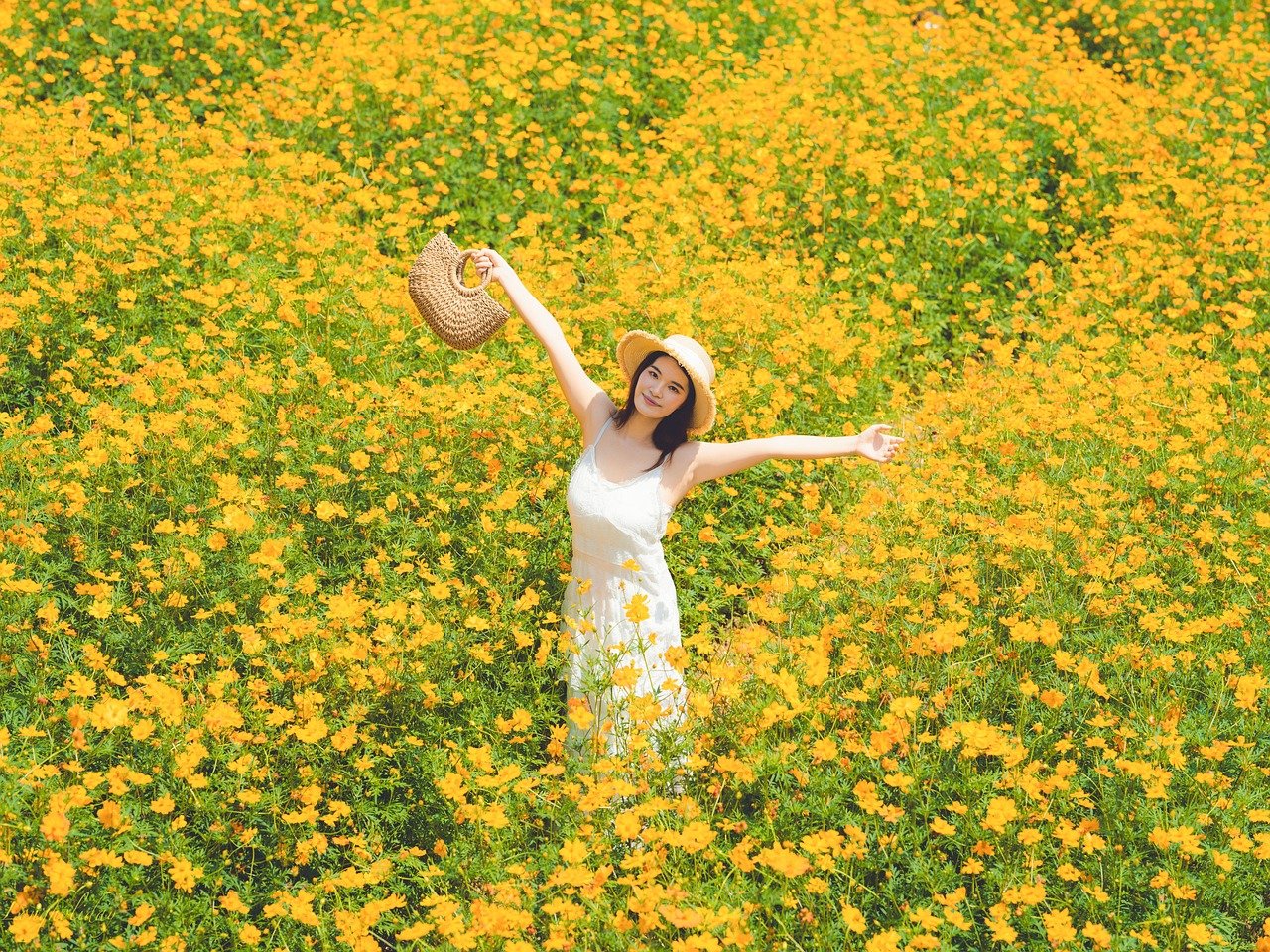
Beauty in Art and Literature
When we think about beauty in art and literature, we're diving into a vast ocean of creativity and expression. Art has the power to evoke emotions, inspire thoughts, and challenge perceptions. From the delicate strokes of a painter's brush to the rhythmic flow of a poet's words, beauty manifests in countless forms, each carrying its own significance. But what exactly makes art beautiful? Is it the technical skill involved, the emotional resonance it creates, or perhaps the message it conveys? These questions have puzzled artists and philosophers alike for centuries.
In exploring beauty within artistic mediums, we must first consider the role of aesthetics. Aesthetics is the study of sensory values and how we perceive beauty. It plays a crucial role in determining beauty standards, influencing both artists and audiences in their perceptions and emotional responses to art. For instance, a painting that captures the serene beauty of a sunset might evoke feelings of peace and tranquility, while a bold abstract piece may stir confusion and intrigue. These varied responses highlight the subjective nature of beauty, reminding us that what one person finds breathtaking, another might overlook.
To further understand the role of aesthetics, we can break it down into several key components:
- Color: The choice of colors can significantly impact the mood of a piece. Warm colors often evoke feelings of warmth and comfort, while cooler tones might induce calmness or sadness.
- Form: The shapes and structures within an artwork can create harmony or tension, influencing how we perceive beauty.
- Composition: The arrangement of elements within a piece can guide the viewer's eye and create a sense of balance or imbalance.
Artistic beauty is often subjective, varying greatly among individuals and cultures. This subjectivity reflects personal experiences and societal norms that shape our understanding of what is beautiful. For example, a traditional landscape painting may be revered in one culture, while another may find beauty in urban graffiti. This diversity in appreciation underscores the idea that beauty is not a one-size-fits-all concept.
Literature, too, captures beauty in its many forms. Through the written word, authors explore themes of love, nature, and the human experience, enriching our emotional and intellectual engagement with texts. Think about the way a beautifully crafted sentence can linger in your mind, much like a captivating melody. The power of language allows writers to paint vivid pictures in our imaginations, transporting us to different worlds and experiences.
Consider the following aspects of beauty in literature:
- Imagery: Vivid descriptions create mental images that enhance the reader's experience, making the beauty of a scene tangible.
- Emotion: The ability of a story to evoke strong feelings—whether joy, sorrow, or nostalgia—can be a profound expression of beauty.
- Theme: The exploration of complex themes, such as love or loss, can resonate deeply with readers, adding layers to the beauty of a literary work.
In conclusion, beauty in art and literature is a multifaceted concept that transcends simple definitions. It invites us to engage with our emotions, challenge our perceptions, and appreciate the diverse expressions of creativity that exist in our world. Whether through a breathtaking painting or a beautifully written poem, beauty serves as a bridge connecting us to our shared human experience.
Q: What defines beauty in art?
A: Beauty in art is often defined by emotional resonance, technical skill, and the ability to challenge perceptions. However, it is highly subjective and varies among individuals and cultures.
Q: How does literature convey beauty?
A: Literature conveys beauty through rich imagery, emotional depth, and exploration of complex themes, allowing readers to connect with the text on multiple levels.
Q: Can beauty be objective?
A: While some argue that certain aesthetic principles can be universally appreciated, beauty is predominantly subjective, influenced by personal experiences and cultural contexts.
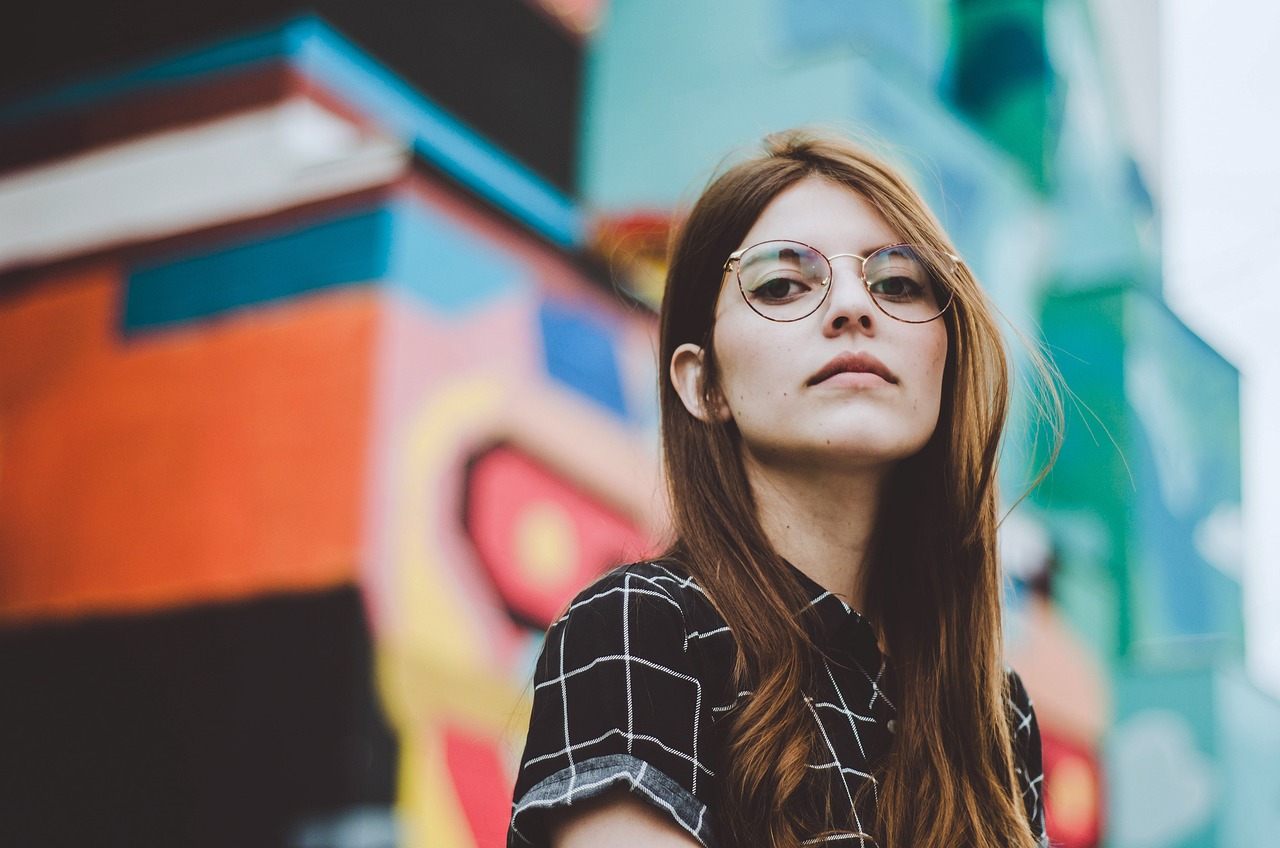
The Role of Aesthetics
Aesthetics is not just a fancy term thrown around in art classes; it’s a profound concept that shapes our understanding of beauty in everyday life. Think of aesthetics as the lens through which we view the world. It influences how we perceive everything from a stunning sunset to a well-crafted piece of furniture. The principles of aesthetics serve as a guide, helping us navigate the vast sea of visual experiences and emotional responses. But what exactly does this mean for artists and audiences alike?
At its core, aesthetics is about the appreciation of beauty and taste. It’s the reason why some artworks resonate deeply with us while others leave us feeling indifferent. When artists create, they often rely on aesthetic principles to evoke emotions and provoke thought. This can include elements such as color, form, balance, and harmony. For instance, consider how a vibrant painting can uplift your mood or how a minimalist design can evoke a sense of calm. Each of these experiences is driven by aesthetic choices that tap into our collective consciousness.
Moreover, aesthetics plays a crucial role in shaping societal beauty standards. These standards can vary widely across different cultures and time periods. In one culture, a specific body type may be celebrated, while in another, entirely different attributes are prized. This variability highlights the subjective nature of beauty and how aesthetics influences our perceptions. It raises a fascinating question: if beauty is in the eye of the beholder, what factors shape that eye? Is it culture, personal experiences, or perhaps even social media?
To illustrate this concept, let’s take a look at how aesthetics can differ across various art forms:
| Art Form | Aesthetic Elements | Emotional Response |
|---|---|---|
| Painting | Color, Composition, Texture | Joy, Nostalgia, Contemplation |
| Music | Melody, Harmony, Rhythm | Excitement, Sadness, Serenity |
| Literature | Imagery, Language, Structure | Empathy, Anger, Reflection |
This table illustrates how different art forms utilize aesthetic elements to elicit specific emotional responses from their audiences. It’s a powerful reminder that aesthetics is not merely an abstract concept; it’s a tangible force that influences our interactions with art and each other.
Ultimately, the role of aesthetics transcends the realm of art. It permeates our daily lives, from the clothes we wear to the environments we inhabit. Our choices are often guided by an underlying aesthetic sensibility. This means that aesthetics is not just about what we find beautiful; it’s also about how those perceptions affect our behaviors and relationships. So next time you find yourself captivated by a piece of art or even a well-designed website, take a moment to appreciate the aesthetics at play. They are shaping your experience in ways you might not even realize!
- What is aesthetics? Aesthetics is the branch of philosophy that deals with the nature of beauty, art, and taste, as well as the creation and appreciation of beauty.
- How does culture influence beauty standards? Culture shapes beauty standards through historical context, social norms, and collective values, resulting in diverse interpretations of beauty across different societies.
- Can beauty be objectively defined? While some aspects of beauty may have universal appeal, beauty is largely subjective and influenced by personal experiences and cultural backgrounds.
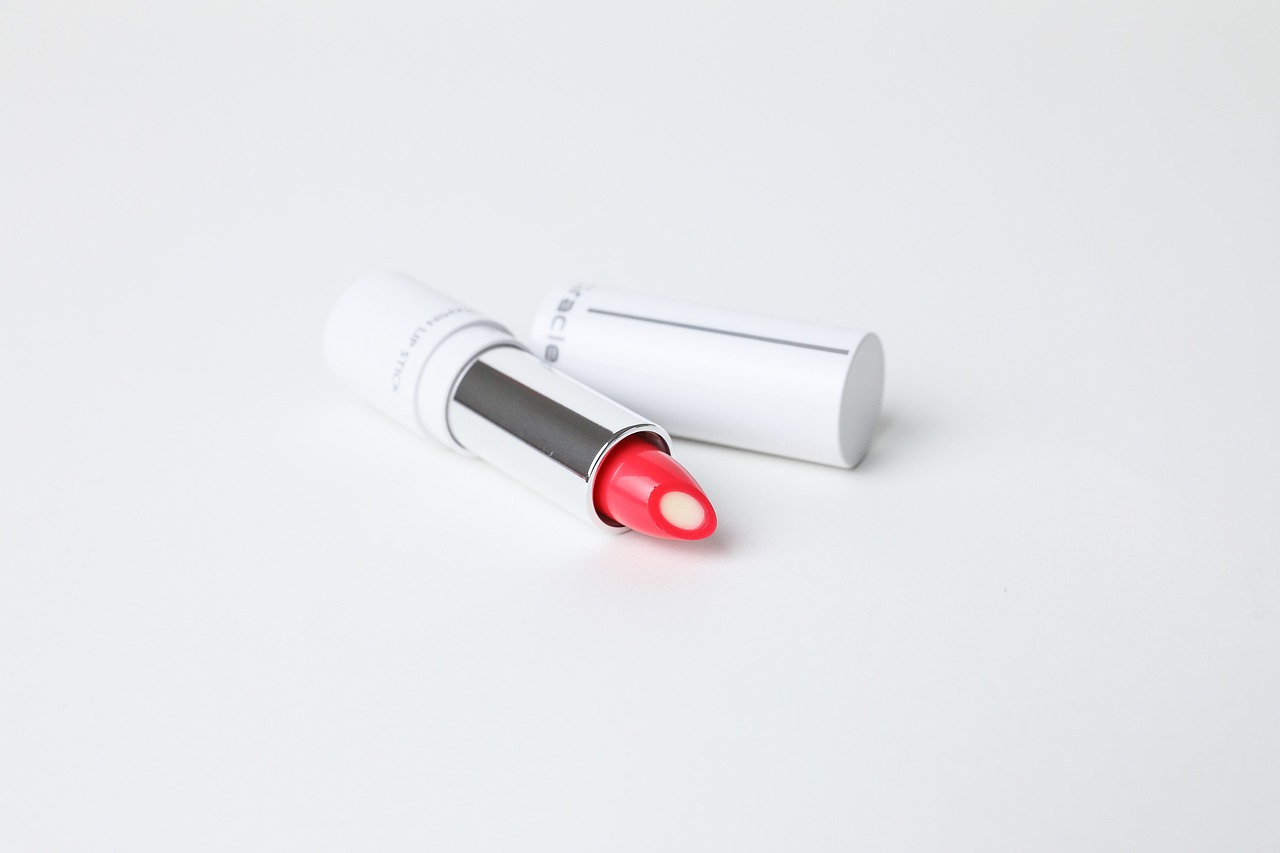
Subjectivity of Artistic Beauty
When we talk about the , we are diving into a realm where personal interpretation reigns supreme. Artistic beauty is like a chameleon; it changes colors based on who is observing it. What one person finds breathtaking, another might consider mundane. This variability stems from a myriad of factors, including cultural background, personal experiences, and even emotional states. Have you ever looked at a piece of art and felt a rush of emotions, while your friend stood beside you, completely unmoved? This is the essence of artistic beauty's subjectivity.
Consider how different cultures celebrate beauty through their art. For instance, in Western cultures, beauty may often be associated with symmetry and proportion, reminiscent of the classical ideals established by ancient Greek philosophers. On the other hand, many Eastern cultures might emphasize harmony and balance, showcasing beauty in nature and the intricate designs found in traditional crafts. This divergence illustrates how our backgrounds shape our perceptions of beauty. It's not just about what we see; it's about the stories we carry with us.
Moreover, the subjective nature of beauty can be influenced by trends and societal norms. For example, in the realm of contemporary art, movements like abstract expressionism challenge traditional notions of beauty. Artists like Jackson Pollock and Mark Rothko invite viewers to engage with their work on an emotional level rather than a purely aesthetic one. This shift prompts us to ask: is beauty found in the technique and form, or in the feelings evoked by the piece? The answer, much like beauty itself, is subjective.
To further illustrate this point, let's look at a few examples of how artistic beauty can vary:
| Art Movement | Beauty Interpretation | Key Artists |
|---|---|---|
| Renaissance | Harmony, proportion, and realism | Leonardo da Vinci, Michelangelo |
| Impressionism | Capturing light and movement | Claude Monet, Edgar Degas |
| Surrealism | Dreamlike and bizarre interpretations | Salvador Dalí, René Magritte |
In conclusion, the subjectivity of artistic beauty is a fascinating concept that invites us to explore beyond the surface. It encourages us to engage in discussions about our personal interpretations and experiences. Each piece of art becomes a mirror reflecting our own emotions, backgrounds, and beliefs. So, the next time you find yourself in front of a painting or a sculpture, take a moment to consider not just what you see, but how it resonates with you. After all, beauty is not merely in the eye of the beholder; it's a deeply personal journey of discovery.
- What does subjectivity mean in the context of beauty? Subjectivity refers to how personal experiences and cultural backgrounds influence our perception of beauty, making it unique to each individual.
- How do cultural differences affect our understanding of beauty? Different cultures have varying standards and interpretations of beauty, often shaped by historical and social contexts.
- Can beauty be objectively defined? While some aspects of beauty may seem universal, much of it remains subjective, influenced by personal taste and societal norms.

Beauty in Literary Works
Literature serves as a profound canvas where the concept of beauty is explored in its myriad forms. Through the written word, authors capture the essence of beauty, weaving it into the fabric of their narratives, and inviting readers to engage with it on emotional and intellectual levels. From the passionate verses of poetry to the vivid descriptions in novels, beauty manifests itself as a powerful theme that resonates deeply with human experience.
One of the most captivating aspects of beauty in literature is its ability to evoke strong emotions. Consider how a beautifully crafted sentence can transport a reader to a serene landscape or ignite feelings of love and longing. For instance, in works such as *Pride and Prejudice* by Jane Austen, beauty is not merely a physical attribute but a reflection of character and virtue. Austen illustrates how the beauty of Elizabeth Bennet's spirit captivates Mr. Darcy, suggesting that true beauty transcends mere appearance.
Moreover, beauty in literary works often serves as a mirror reflecting societal values and ideals. Different eras and cultures have their own interpretations of beauty, which can be seen in the literature of the time. For example, the Romantic poets celebrated the beauty of nature and emotion, while the Modernists grappled with the complexities of beauty in a rapidly changing world. This evolution of beauty in literature highlights how it is not a static concept but rather a fluid one, shaped by context and perspective.
Additionally, beauty can be found in the themes that literature explores. Love, nature, and the human condition are often depicted with an emphasis on beauty, enriching our understanding of these experiences. The beauty of a sunset may symbolize hope and renewal, while the beauty of a tragic love story may evoke empathy and reflection. These thematic explorations allow readers to connect with the text on a deeper level, as they recognize the beauty in their own lives mirrored in the stories they read.
To illustrate the diverse representations of beauty in literature, consider the following table that highlights various literary works and their unique portrayals of beauty:
| Literary Work | Author | Theme of Beauty |
|---|---|---|
| Pride and Prejudice | Jane Austen | Inner beauty and virtue |
| Leaves of Grass | Walt Whitman | Nature and the human spirit |
| The Great Gatsby | F. Scott Fitzgerald | Illusion of beauty and wealth |
| The Bell Jar | Sylvia Plath | Beauty in mental struggle |
Ultimately, beauty in literary works is not a singular notion; it is a rich tapestry woven from the threads of personal experience, cultural context, and emotional resonance. As readers, we are invited to explore these representations, allowing us to reflect on our own perceptions of beauty and how it influences our lives. Whether through lyrical poetry, poignant prose, or the vivid imagery of storytelling, literature continues to be a powerful medium for expressing and contemplating beauty in its many forms.
- What is the significance of beauty in literature?
Beauty in literature helps to evoke emotions, reflect societal values, and enrich our understanding of themes such as love and nature. - How do different cultures interpret beauty in literary works?
Cultural interpretations of beauty can vary widely, influencing how authors depict characters, settings, and themes in their narratives. - Can beauty in literature impact our real-life perceptions?
Absolutely! Literature often mirrors our experiences and can shape our understanding and appreciation of beauty in everyday life.
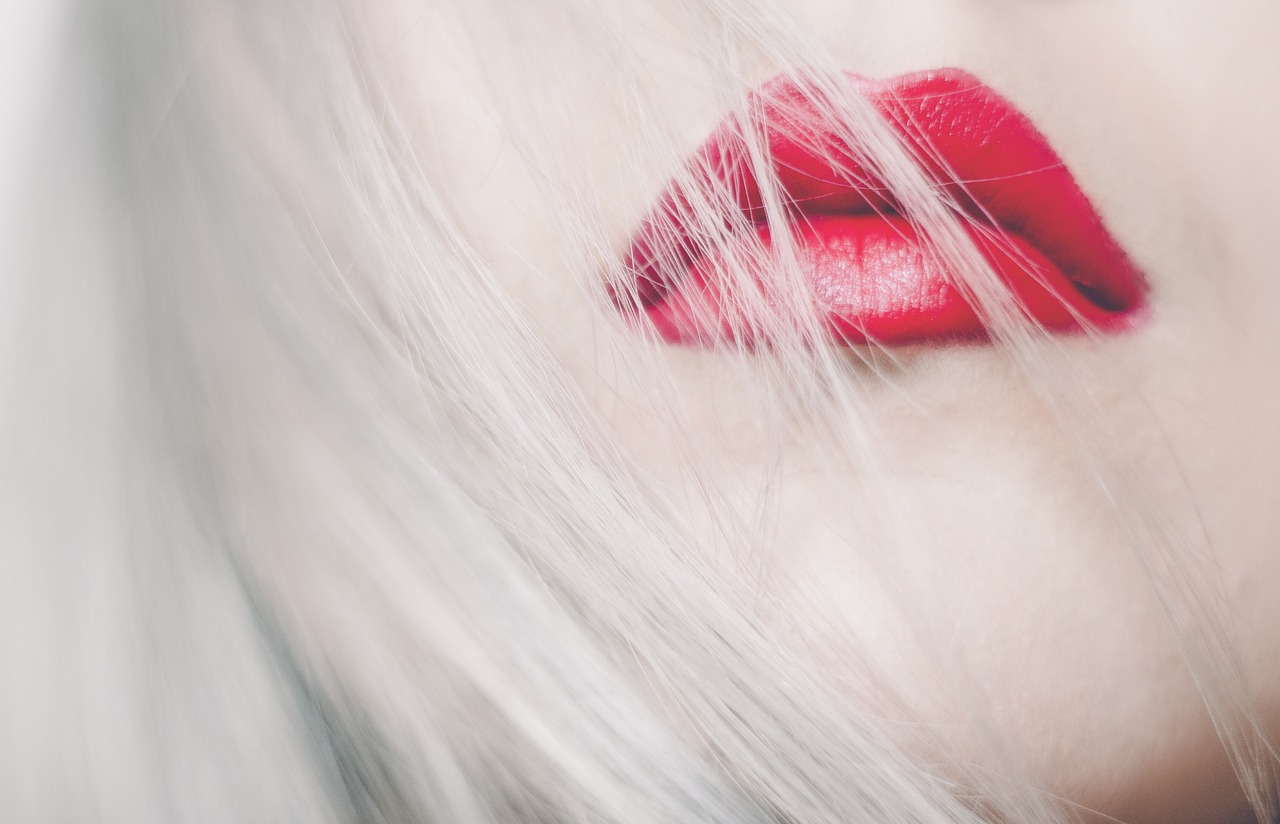
Philosophical Theories of Beauty
The exploration of beauty has long captivated the minds of philosophers, leading to the development of various theories that attempt to unravel its essence. Among these, Kant and Hegel stand out as two pivotal figures whose ideas significantly shaped our understanding of beauty. Kant, for instance, posited that beauty is not merely a property of objects but rather a judgment made by the observer. According to him, beauty arises from a harmonious interplay between the object and the viewer's faculties of understanding and imagination. This notion suggests that beauty is inherently subjective, influenced by personal experiences and cultural backgrounds.
On the other hand, Hegel viewed beauty as a manifestation of the absolute spirit, expressing itself through art and nature. He believed that beauty is a synthesis of the subjective and the objective, where the artist's intention and the audience's perception converge. For Hegel, the true essence of beauty lies in its ability to convey profound truths about existence, transcending mere aesthetics. This interplay between perception and emotion is crucial, as it highlights how beauty can evoke deep feelings and reflections, prompting individuals to question their own understanding of the world.
These philosophical frameworks invite us to consider several key aspects of beauty:
- Subjectivity: Beauty is often seen as a personal experience, varying from one individual to another.
- Interrelation: The relationship between the observer and the observed plays a significant role in the perception of beauty.
- Emotional Response: Beauty can evoke a range of emotions, influencing our thoughts and actions.
Moreover, the philosophical discourse on beauty extends beyond mere definitions; it delves into the implications of beauty on human experience and society. For instance, beauty has been linked to concepts of morality and ethics, where a beautiful act or deed is often perceived as a good one. This intertwining of beauty with moral values raises intriguing questions: Is beauty inherently good? Can something be considered beautiful if it lacks ethical substance? These inquiries not only challenge our aesthetic judgments but also compel us to reflect on the deeper meanings behind our perceptions of beauty.
In conclusion, the philosophical theories of beauty, particularly those proposed by Kant and Hegel, provide a rich tapestry for understanding the complexities of aesthetic appreciation. By acknowledging the subjective nature of beauty and its profound emotional impact, we can cultivate a more nuanced perspective that celebrates the diversity of beauty in our lives. Whether through art, nature, or human interactions, beauty remains a powerful force that shapes our experiences and enriches our understanding of the world.
- What is beauty according to philosophy? Philosophy often defines beauty as a subjective experience influenced by personal and cultural factors, rather than an inherent quality of objects.
- How do Kant and Hegel differ in their views on beauty? Kant emphasizes the subjective judgment of beauty, while Hegel sees it as a synthesis of subjective and objective elements, expressing deeper truths.
- Can beauty be linked to morality? Yes, many philosophical discussions suggest that beauty can have ethical implications, where beautiful actions are often associated with goodness.
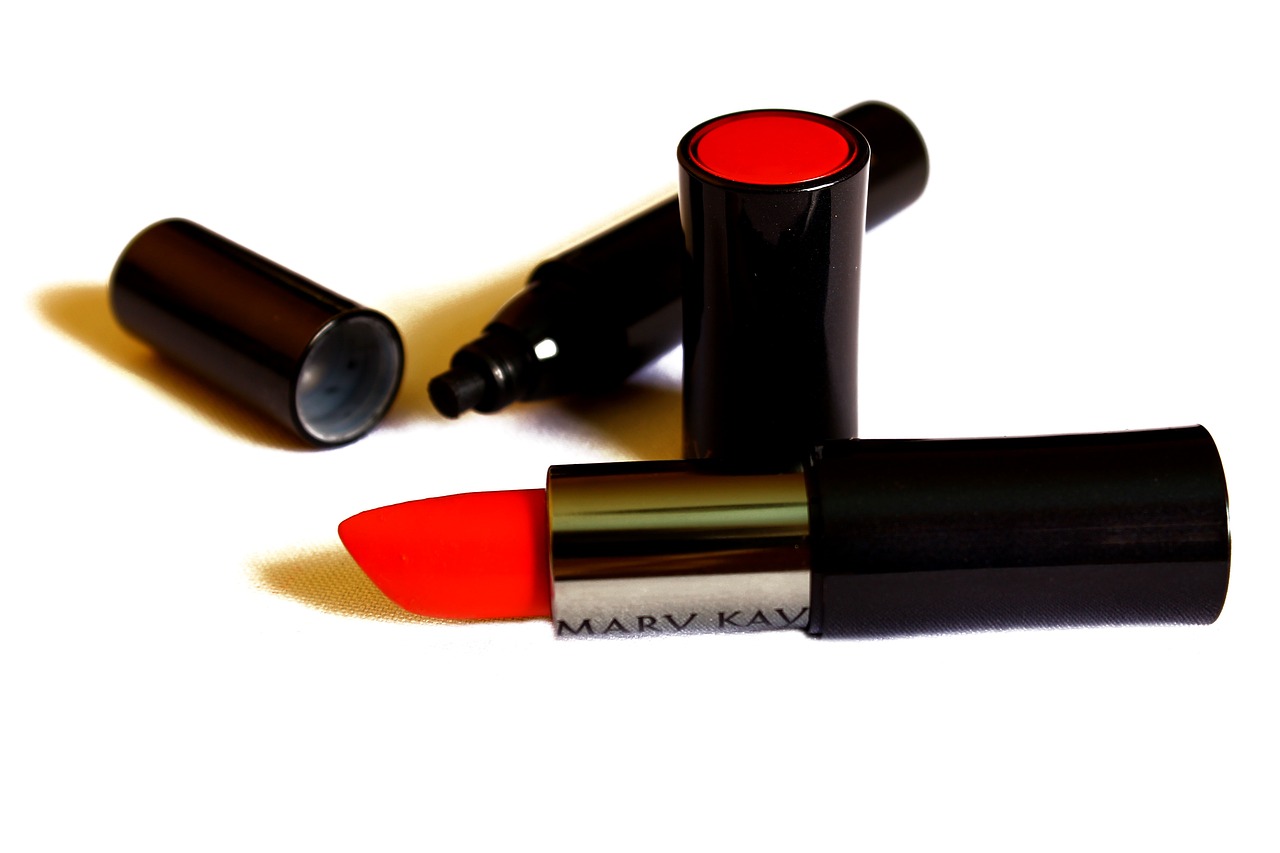
Cultural Interpretations of Beauty
The concept of beauty is not a universal truth; rather, it is a rich tapestry woven from the threads of cultural interpretations and societal norms. Each culture has its own unique standards and ideals that shape what is deemed beautiful. From the sleek silhouettes of fashion in Western societies to the intricate designs of traditional attire in Eastern cultures, beauty manifests in myriad forms. This diversity not only enriches our understanding of beauty but also challenges the notion of a singular standard. It raises the question: how do our cultural backgrounds influence our perceptions of beauty?
In many cultures, beauty is deeply intertwined with historical narratives and social values. For instance, in some African cultures, beauty is often celebrated through body art and adornments, such as tribal tattoos and elaborate jewelry. These practices are not merely aesthetic; they carry profound meanings and signify identity, status, and heritage. Similarly, in Asian cultures, the concept of beauty can be closely linked to harmony and balance, often reflected in traditional art forms like calligraphy and landscape painting. Here, beauty is not just what you see but also what you feel—a harmonious relationship between the subject and its surroundings.
Interestingly, the rise of globalization has led to a fascinating interplay between local and global beauty standards. As cultures interact and influence one another, there is a blending of ideals that can sometimes lead to the homogenization of beauty. For example, the proliferation of Western beauty standards through media and advertising has impacted perceptions worldwide, often overshadowing local traditions and values. This phenomenon prompts a critical examination of cultural identity. Are we losing the essence of our unique beauty standards in the quest for a more 'global' beauty?
Moreover, cultural interpretations of beauty can also evolve over time. What was once considered beautiful can shift dramatically due to changes in societal attitudes, technological advancements, and even political movements. For instance, the body positivity movement has challenged traditional beauty ideals by promoting acceptance of all body types, urging societies to rethink their definitions of beauty. This evolution highlights the dynamic nature of beauty—it's not static but a living concept that reflects the changing tides of culture.
To further illustrate the diversity of beauty standards across cultures, let’s take a look at some key aspects:
| Culture | Beauty Standards |
|---|---|
| African | Body adornments, tribal tattoos, and traditional clothing |
| Asian | Harmony, balance, and intricate designs in art and fashion |
| Western | Slim figures, cosmetic enhancements, and high fashion trends |
| Indigenous | Connection to nature, traditional practices, and storytelling |
In conclusion, cultural interpretations of beauty are as varied as the cultures themselves. They reflect not just aesthetic preferences but also the values, histories, and identities of the people who create and uphold them. Understanding these diverse standards can enhance our appreciation of beauty in all its forms, encouraging us to embrace a more inclusive perspective. After all, beauty is not merely in the eye of the beholder; it is a complex interplay of culture, identity, and personal experience.
- What are some common beauty standards across cultures?
Beauty standards vary greatly, but some common themes include body adornments in African cultures, harmony in Asian aesthetics, and trends in Western fashion.
- How has globalization affected cultural beauty standards?
Globalization has led to the blending of beauty ideals, often overshadowing local traditions and creating a more homogenized view of beauty.
- Can beauty standards change over time?
Yes, beauty standards are dynamic and can evolve due to societal changes, movements like body positivity, and cultural shifts.
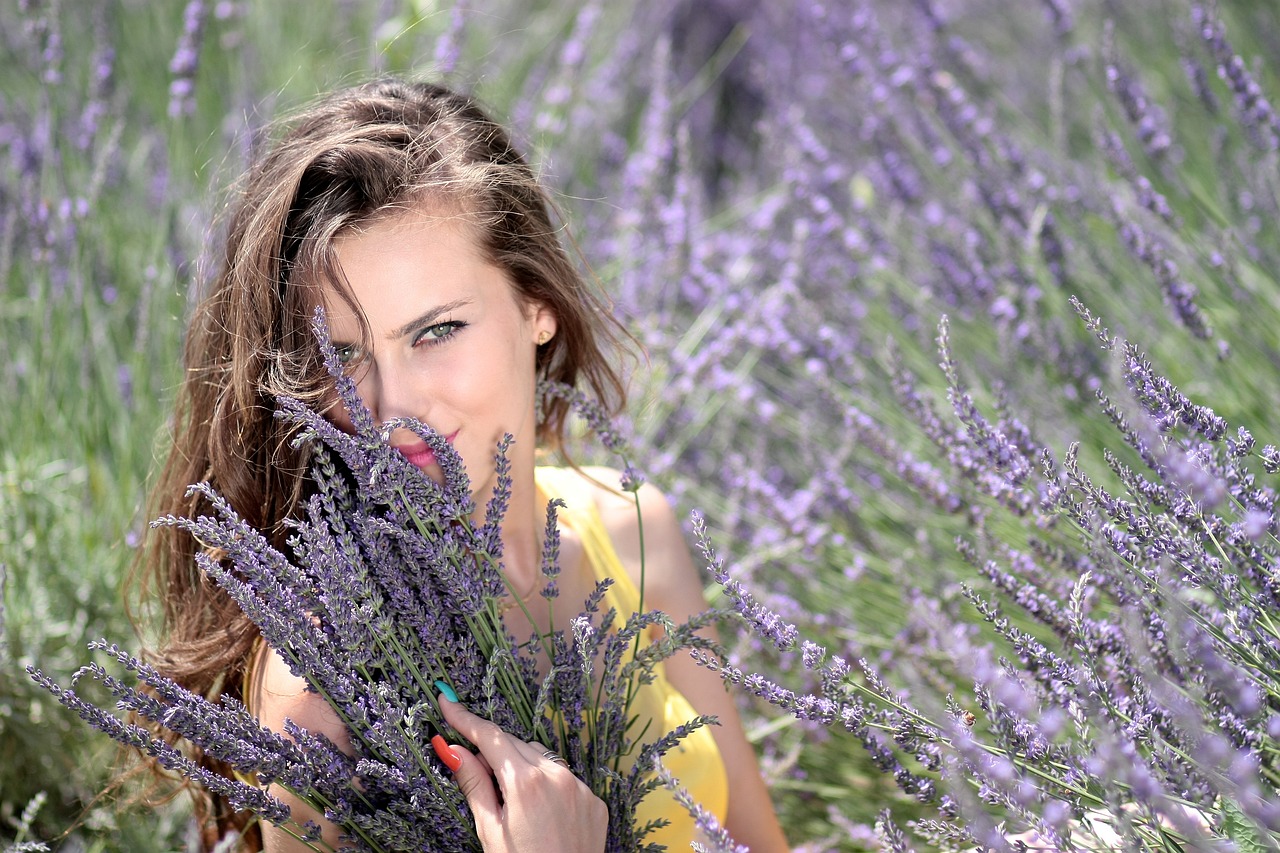
Beauty Standards Across Cultures
Beauty is not a universal concept; rather, it is a tapestry woven from the threads of culture, history, and societal norms. Each culture has its unique standards of beauty, often influenced by various factors such as geography, religion, and social structure. For example, in Western societies, the ideal of beauty has often emphasized attributes like slimness and youth, while in other cultures, such as those in parts of Africa and South Asia, fuller figures are celebrated as symbols of health and prosperity. This divergence illustrates how beauty standards are deeply rooted in cultural contexts and can vary dramatically from one society to another.
To further understand this complexity, let's take a look at some specific cultural beauty standards:
| Culture | Beauty Standard | Significance |
|---|---|---|
| Western | Thinness, youthfulness | Associated with health, wealth, and social status |
| African | Fuller figures | Symbol of fertility, wealth, and health |
| East Asian | Fair skin, delicate features | Represents purity, beauty, and social standing |
| Middle Eastern | Curvy figures, expressive eyes | Reflects femininity and allure in social contexts |
These standards are not merely aesthetic preferences; they carry significant cultural weight. In many societies, beauty standards can dictate social interactions, influence career opportunities, and even affect mental health. For instance, in cultures where fair skin is prized, individuals with darker complexions may face discrimination or social stigma. This phenomenon is not just limited to skin tone; it extends to hair texture, body shape, and even facial features. The pressure to conform to these often unrealistic standards can lead to a host of psychological issues, including low self-esteem and body dysmorphia.
Moreover, the globalization of culture has led to an interesting paradox. While beauty standards are becoming more homogenized through media and advertising, local traditions and values still play a crucial role in shaping what is considered beautiful. This blending of influences can create a rich dialogue about beauty that transcends borders, yet it also raises questions about authenticity and cultural appropriation. Are we losing the unique expressions of beauty that define different cultures, or are we simply evolving into a more interconnected global society?
In conclusion, understanding beauty standards across cultures is essential for appreciating the diversity of human experience. It challenges us to rethink our perceptions of beauty and encourages a more inclusive approach that honors the myriad ways in which beauty can be defined and celebrated. As we navigate this complex landscape, it’s crucial to remember that beauty is not just about appearance; it’s about the stories we tell, the values we uphold, and the connections we foster with one another.
- What are some common beauty standards in different cultures?
Beauty standards vary widely, with Western cultures often favoring thinness, while many African cultures celebrate fuller figures as symbols of health and prosperity. - How do beauty standards impact mental health?
The pressure to conform to societal beauty ideals can lead to issues such as low self-esteem, body image concerns, and mental health disorders. - Can globalization affect beauty standards?
Yes, globalization can lead to the exchange and sometimes homogenization of beauty standards, impacting cultural identity and perceptions of beauty.
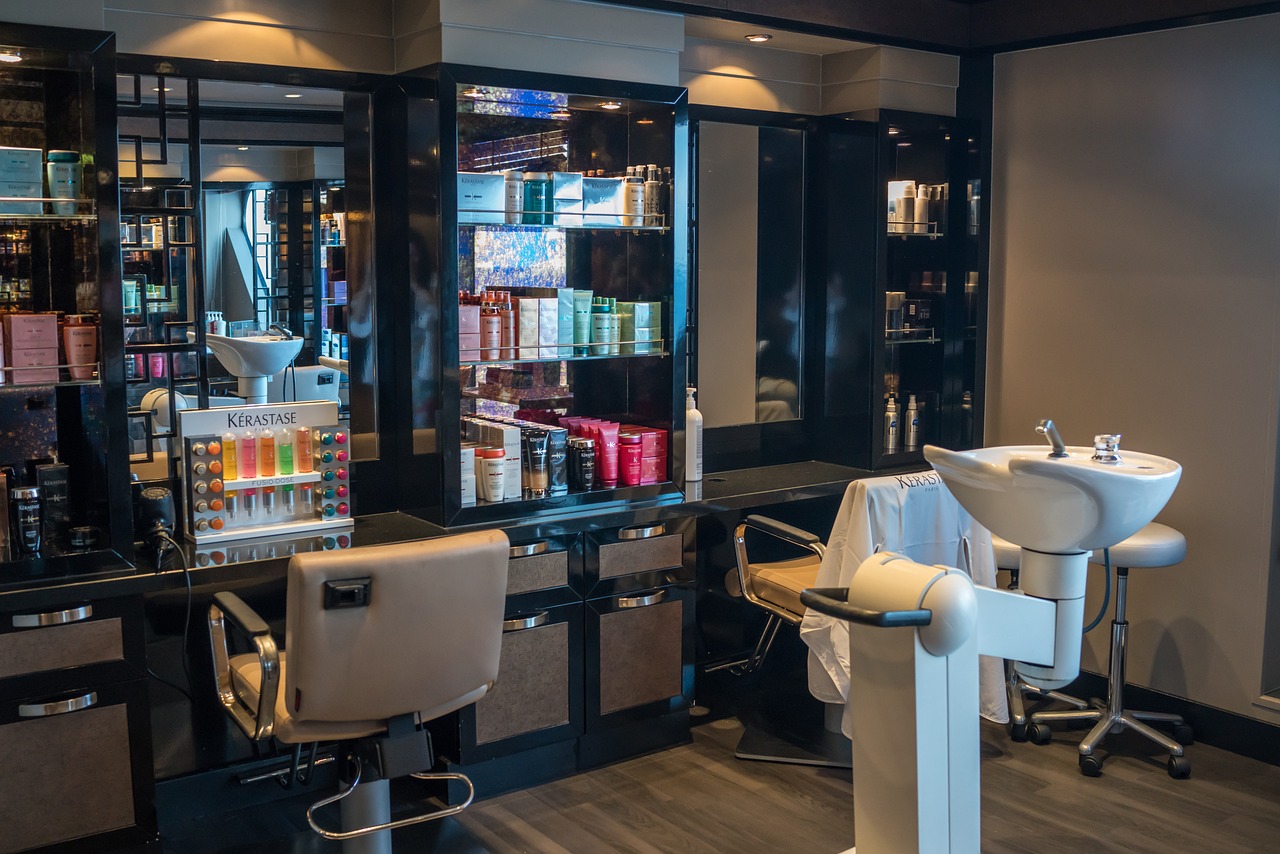
The Impact of Globalization
Globalization has become a buzzword in our interconnected world, but its impact on beauty standards is a topic that deserves deeper exploration. As cultures intermingle and influence one another, the concept of beauty is both challenged and reshaped. Think about it: what once was considered beautiful in one part of the world can quickly become a global trend, often overshadowing local definitions and traditions. This phenomenon raises critical questions about cultural identity and authenticity.
Take, for example, the rise of social media platforms. These platforms have enabled beauty standards to transcend geographical boundaries, creating a melting pot of ideals that often prioritize Western aesthetics. The proliferation of influencers and beauty gurus from diverse backgrounds showcases a variety of beauty norms, yet many still find themselves conforming to a homogenized standard that is heavily influenced by Western media. This shift can be disorienting, leading to a sense of loss regarding local beauty traditions.
Furthermore, globalization has led to the commercialization of beauty standards. Major brands often leverage global marketing strategies that promote a narrow definition of beauty, which can alienate individuals who do not fit into this mold. For instance, a beauty brand may launch a campaign that features models with specific traits, inadvertently sidelining those who embody different cultural or physical characteristics. The result? A society that grapples with conflicting ideals of beauty, often leading to feelings of inadequacy among those who do not see themselves represented.
However, it's not all doom and gloom. Globalization also opens doors for cross-cultural appreciation and the celebration of diversity. As people become more aware of global beauty practices, there is an opportunity to embrace various forms of beauty. For instance, traditional beauty rituals from Africa, Asia, and Indigenous cultures are gaining recognition and respect, showcasing the richness of global aesthetics. This exchange can foster a more inclusive understanding of beauty that honors local traditions while also appreciating the global tapestry of beauty standards.
In essence, the impact of globalization on beauty is a double-edged sword. On one hand, it can lead to a homogenized view of beauty that overlooks cultural uniqueness. On the other, it provides a platform for diverse expressions of beauty to flourish. As we navigate this complex landscape, it becomes essential to celebrate our differences while also questioning the standards that are imposed upon us. After all, beauty is not just skin deep; it is a reflection of our identities, histories, and cultures.
- How does globalization affect local beauty standards?
Globalization often leads to the dominance of Western beauty ideals, which can overshadow and diminish local definitions of beauty. - Can globalization lead to a more inclusive definition of beauty?
Yes, globalization can facilitate the appreciation of diverse beauty practices and encourage a broader understanding of what beauty can be. - What role does social media play in shaping beauty standards?
Social media amplifies certain beauty standards while also providing a platform for diverse voices, creating both challenges and opportunities in how beauty is perceived. - Is it possible to maintain cultural identity while embracing global beauty trends?
Absolutely! Individuals can celebrate their unique cultural beauty while also engaging with global trends, creating a more enriched personal identity.
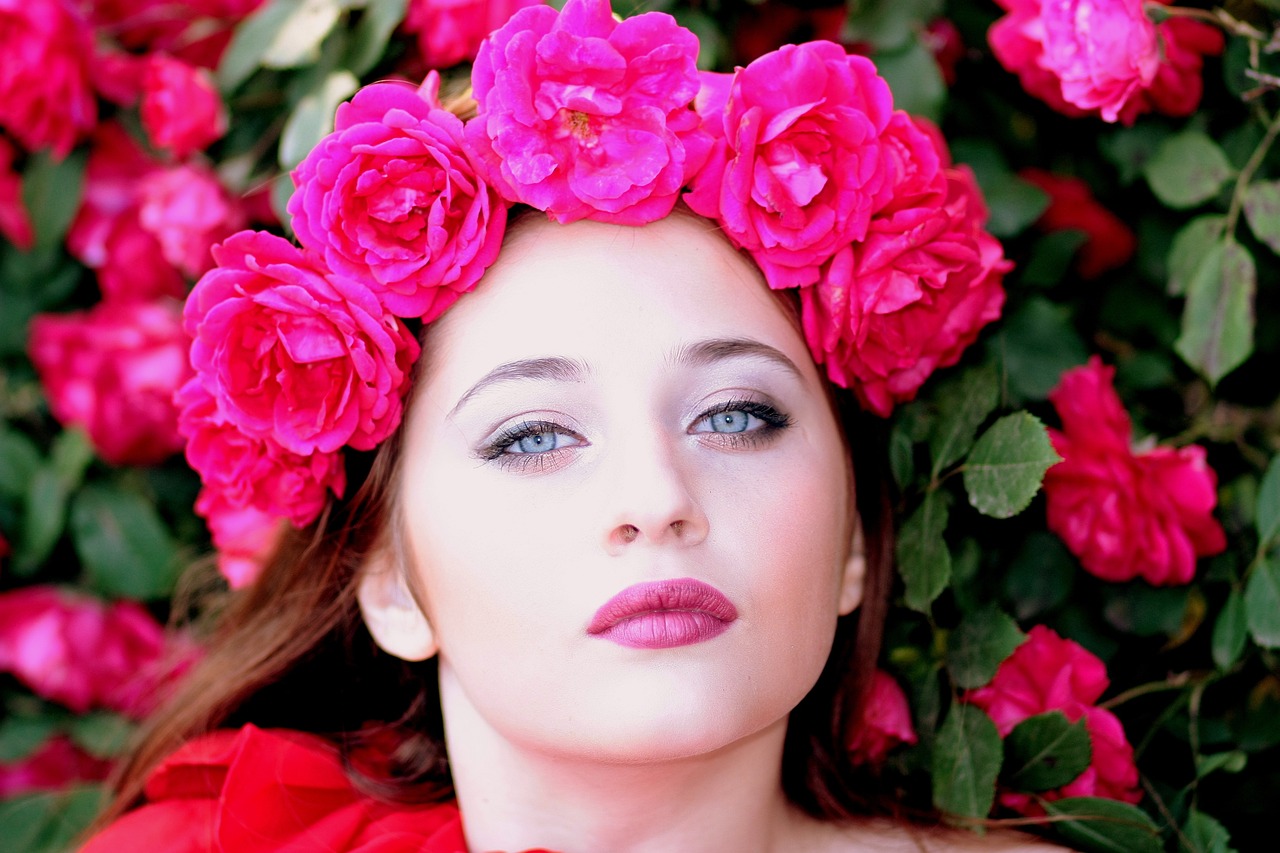
The Psychological Impact of Beauty
When we think about beauty, we often picture stunning landscapes, captivating artwork, or even the allure of a well-crafted piece of literature. However, the implications of beauty extend far beyond mere aesthetics; they delve deep into the psychological fabric of our lives. The way we perceive beauty can significantly influence our self-esteem, shape our mental health, and even dictate the nature of our interpersonal relationships. It’s fascinating to consider how something as seemingly superficial as beauty can wield such profound power over our emotions and social interactions.
To begin with, let’s explore the relationship between beauty and self-perception. For many individuals, societal standards of beauty can create a double-edged sword. On one hand, those who conform to these ideals often experience increased confidence and social acceptance. On the other hand, those who feel they fall short can struggle with feelings of inadequacy and low self-worth. This disparity can lead to a vicious cycle, where the pursuit of beauty becomes an obsessive endeavor, impacting mental well-being. Studies have shown that individuals who perceive themselves as beautiful tend to have higher self-esteem, while those who do not may battle issues like anxiety and depression.
Moreover, the influence of beauty extends into our social relationships. The halo effect is a psychological phenomenon where individuals tend to associate positive traits with those deemed beautiful. This can lead to advantages in various aspects of life, such as job opportunities, friendships, and romantic relationships. For instance, research indicates that attractive individuals are often perceived as more competent, friendly, and trustworthy. This perception can create an uneven playing field, where beauty becomes a currency in social dynamics, influencing who gets invited to the party and who gets the promotion.
Interestingly, the psychological impact of beauty is not just limited to those who are considered attractive. Society's obsession with beauty can also affect those who do not fit conventional standards, leading to feelings of exclusion and isolation. This is particularly evident in the age of social media, where images are often curated to present an idealized version of reality. The constant comparison to these enhanced portrayals can exacerbate feelings of inadequacy, leading to detrimental effects on mental health. It raises the question: how do we navigate a world where beauty is so heavily emphasized?
As we dissect the psychological ramifications of beauty, it’s essential to highlight the role of cultural influences. Different cultures have varying standards of beauty, and these standards can significantly affect how individuals perceive themselves and others. For example, in some cultures, a fuller figure is celebrated, while in others, a slimmer physique is preferred. This cultural diversity underscores the relativity of beauty and how it shapes our self-image. Understanding this can help us foster a more inclusive perspective on beauty, encouraging individuals to embrace their unique attributes rather than conforming to a singular ideal.
In conclusion, the psychological impact of beauty is a complex interplay of perception, culture, and individual experience. It influences our self-esteem, shapes our social relationships, and can even dictate our mental health. As we continue to navigate a society that often prioritizes beauty, it’s crucial to cultivate an appreciation for the diversity of beauty in all its forms. By doing so, we can begin to dismantle the rigid standards that confine us and promote a healthier, more inclusive understanding of what it means to be beautiful.
- How does beauty affect mental health?
Beauty can significantly impact mental health, with those who feel attractive often experiencing higher self-esteem and lower levels of anxiety. - What is the halo effect?
The halo effect is a cognitive bias where people assume that someone who is beautiful also possesses other positive traits, such as intelligence or kindness. - Are beauty standards the same across cultures?
No, beauty standards vary widely across different cultures, influenced by historical, social, and economic factors. - How can we promote a healthier view of beauty?
Encouraging acceptance of diverse beauty standards and fostering self-love can help promote a healthier view of beauty.
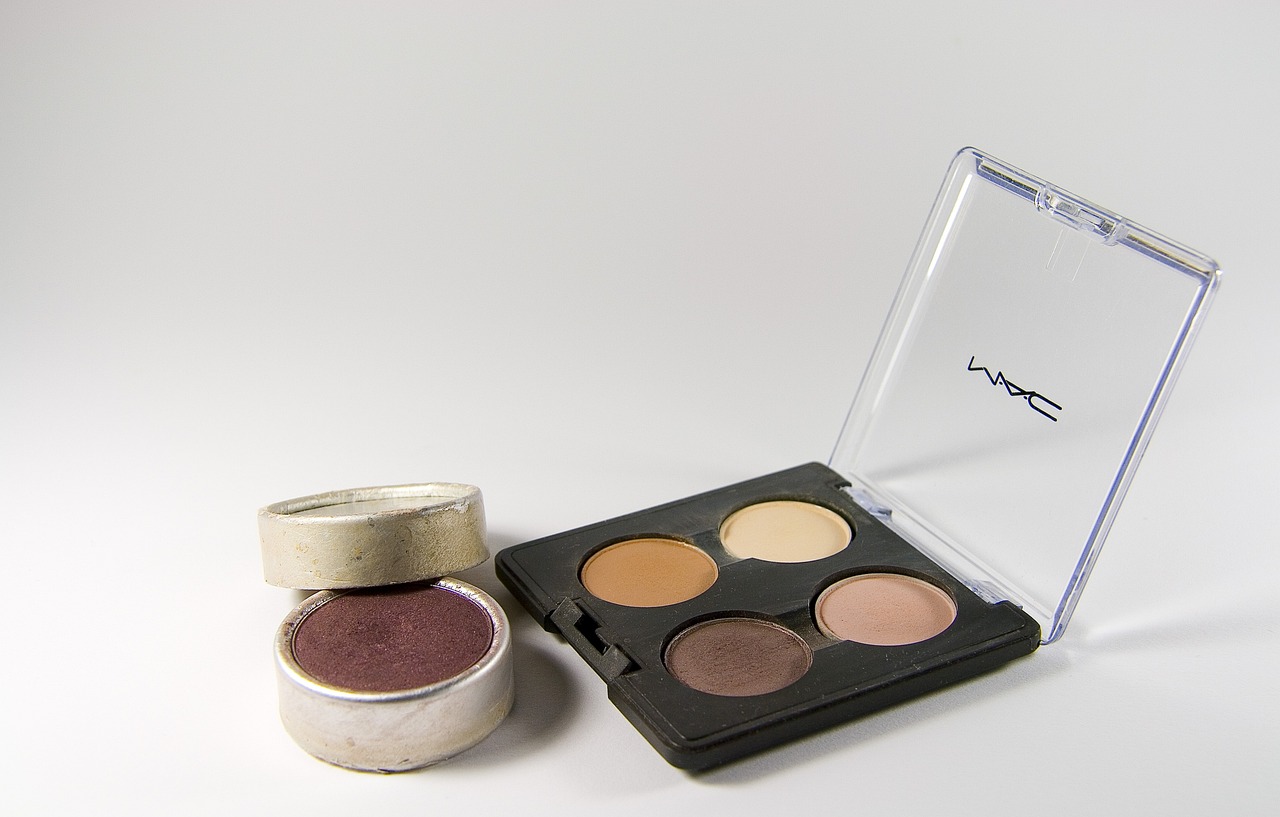
Beauty and Self-Perception
When we talk about beauty, it’s impossible to ignore the profound impact it has on self-perception. Think about it: how often do we find ourselves scrolling through social media, bombarded by images of seemingly perfect individuals? These visuals can create an unrealistic benchmark for beauty, leading many to question their own worth. The connection between beauty and self-esteem is not just a passing thought; it’s a complex interplay that shapes how we view ourselves and interact with the world.
For many, beauty is not just skin deep; it transcends physical appearance and taps into our emotional landscape. When someone feels beautiful, their confidence often soars. This boost can lead to a more positive self-image, encouraging individuals to engage more openly in social situations. Conversely, when beauty standards feel unattainable, it can result in feelings of inadequacy and low self-esteem. It’s like trying to catch smoke with your bare hands; the more you chase it, the more elusive it becomes.
Interestingly, self-perception is not solely influenced by personal views but is also shaped by societal expectations. In a world where beauty norms are constantly evolving, individuals often find themselves wrestling with their identities. This struggle can be particularly evident in the following ways:
- Comparison: The tendency to compare oneself with others can lead to dissatisfaction. When we see someone who fits the conventional mold of beauty, it can make us feel less valuable.
- Body Image Issues: Negative self-perception can manifest as body image issues, where individuals feel their appearance does not meet societal standards, leading to a cycle of self-doubt.
- Social Anxiety: A poor self-image can result in social anxiety, making it difficult for individuals to engage with others, fearing judgment based on their appearance.
Moreover, the psychological effects of beauty extend beyond individual self-esteem; they can ripple through our relationships. For instance, studies have shown that people who perceive themselves as attractive are often treated differently in social and professional settings. This phenomenon can create a feedback loop: feeling beautiful leads to positive reinforcement from others, which in turn enhances one’s self-perception. However, this can also lead to superficial relationships, where the depth of connection is overshadowed by the emphasis on beauty.
Ultimately, the relationship between beauty and self-perception is a double-edged sword. On one hand, beauty can empower and uplift; on the other, it can constrain and diminish self-worth. It’s crucial for individuals to cultivate a sense of beauty that is not solely dependent on external validation. Instead, embracing a more holistic view of beauty—one that includes personality, kindness, and intellect—can foster a healthier self-perception.
As we navigate the intricate landscape of beauty and self-esteem, it’s vital to remember that true beauty lies in authenticity. By celebrating our unique traits and focusing on personal growth, we can redefine what beauty means to us, creating a more inclusive and compassionate understanding of ourselves and others.
- How does beauty affect self-esteem?
Beauty can significantly influence self-esteem, as societal standards often dictate how individuals perceive their worth based on appearance. - Can self-perception change over time?
Yes, self-perception is dynamic and can change based on personal experiences, societal influences, and individual growth. - What role does media play in shaping beauty standards?
Media plays a crucial role in shaping beauty standards by promoting specific ideals, which can affect how individuals view themselves.

Beauty in Social Relationships
When we talk about beauty, it's not just about what we see in the mirror or on a magazine cover; it's about how beauty influences our social relationships. Have you ever noticed how certain people seem to attract more friends or romantic partners? It's not merely their physical appearance; it's often tied to the perception of beauty that society has instilled in us. This perception can create a ripple effect, impacting everything from self-esteem to social dynamics.
In many ways, beauty acts as a social currency. Those deemed beautiful often enjoy advantages that others may not. For instance, studies have shown that attractive individuals may receive more job offers, be treated with more respect, and even have more fulfilling romantic relationships. This phenomenon, often referred to as the “halo effect,” suggests that we tend to associate positive traits with physically attractive people. But why does this happen? It could be that beauty is seen as a signal of good health, genetic fitness, or even social success.
But let’s not forget the other side of the coin. The pressure to conform to certain beauty standards can lead to feelings of inadequacy and low self-esteem, especially for those who don’t fit the mold. This can create a cycle where individuals feel they need to alter their appearance to be accepted, leading to a disconnect in genuine social interactions. The question arises: how do we navigate this complex landscape of beauty in our relationships?
One important factor is self-perception. How we view ourselves can significantly impact our interactions with others. If we believe we are beautiful, we are more likely to exude confidence, which can draw people in. Conversely, if we feel unattractive, we may withdraw from social situations, leading to missed opportunities for connection. This is where the role of beauty in social relationships becomes intricate—it’s not just about how others perceive us but also about how we perceive ourselves.
Moreover, beauty can act as a double-edged sword in romantic relationships. While initial attraction may be influenced by physical beauty, long-lasting relationships often hinge on deeper qualities such as personality, shared values, and emotional connection. In essence, while beauty may open the door, it’s the inner qualities that keep it open. This is why many people find that their partners become more attractive to them over time as they grow closer and develop a deeper bond.
In a world increasingly focused on appearance, it’s essential to recognize the diverse forms of beauty that exist within our social circles. Beauty is not a monolith; it is shaped by cultural backgrounds, personal experiences, and individual preferences. Embracing this diversity can lead to richer, more fulfilling relationships. So, next time you find yourself judging someone based on their looks, take a moment to consider the unique beauty they bring to the table.
In conclusion, beauty plays a multifaceted role in shaping our social relationships. It can influence our interactions, self-esteem, and even the dynamics of our romantic lives. Understanding this complexity allows us to appreciate the deeper connections that go beyond mere appearances. After all, true beauty often lies in the heart and mind, where genuine connections flourish.
- How does beauty affect self-esteem? Beauty can significantly impact self-esteem, as societal standards often dictate how individuals perceive their worth based on their appearance.
- Is beauty subjective? Yes, beauty is highly subjective and can vary greatly among different cultures and individuals, shaped by personal experiences and societal norms.
- Can relationships thrive without physical attraction? Absolutely! While physical attraction may initiate a relationship, emotional connection and shared values are crucial for long-term success.
- How can one improve their self-perception of beauty? Engaging in positive self-talk, surrounding oneself with supportive individuals, and focusing on personal strengths can enhance self-perception.
Frequently Asked Questions
- What is the philosophical definition of beauty?
Philosophically, beauty is often defined as a quality that provides pleasure or satisfaction to the senses or the mind. Thinkers like Plato and Aristotle explored the essence of beauty, suggesting that it is not just about aesthetics but also about harmony, proportion, and the deeper truths about existence.
- How do cultural interpretations shape our understanding of beauty?
Cultural interpretations play a vital role in shaping beauty standards. Different cultures celebrate various attributes, influenced by historical and social contexts. For instance, beauty ideals in Western cultures often emphasize youth and slimness, while other cultures may value different traits, showcasing the diversity of aesthetic values worldwide.
- Can beauty be subjective?
Absolutely! Beauty is highly subjective and varies from person to person. What one individual finds beautiful may not resonate with another, reflecting personal experiences and cultural backgrounds. This subjectivity enriches our understanding of beauty, reminding us that it's a personal journey rather than a universal standard.
- What role does beauty play in art and literature?
In art and literature, beauty serves as a powerful tool for expression and connection. Artists and writers often explore themes of beauty to evoke emotions, provoke thought, and engage audiences. Whether through vivid imagery in a poem or striking visuals in a painting, beauty enhances the overall experience and meaning of creative works.
- How does globalization affect beauty standards?
Globalization has led to the blending and sometimes homogenization of beauty standards across cultures. While it can promote a richer exchange of ideas, it also raises concerns about cultural identity and authenticity. This intersection of global influences can create challenges in how beauty is perceived and valued in different societies.
- What is the psychological impact of beauty on individuals?
The perception of beauty can significantly influence an individual's self-esteem and mental health. People who feel aligned with societal beauty standards may experience higher self-worth, while those who feel excluded may struggle with body image issues. This dynamic highlights the profound effects beauty can have on personal and social well-being.
- How does beauty affect social relationships?
Beauty often plays a pivotal role in social dynamics, influencing attraction and social status. People may form connections based on perceived beauty, which can impact relationships in various contexts. Understanding this influence can help individuals navigate their social interactions and foster deeper connections beyond surface-level beauty.

